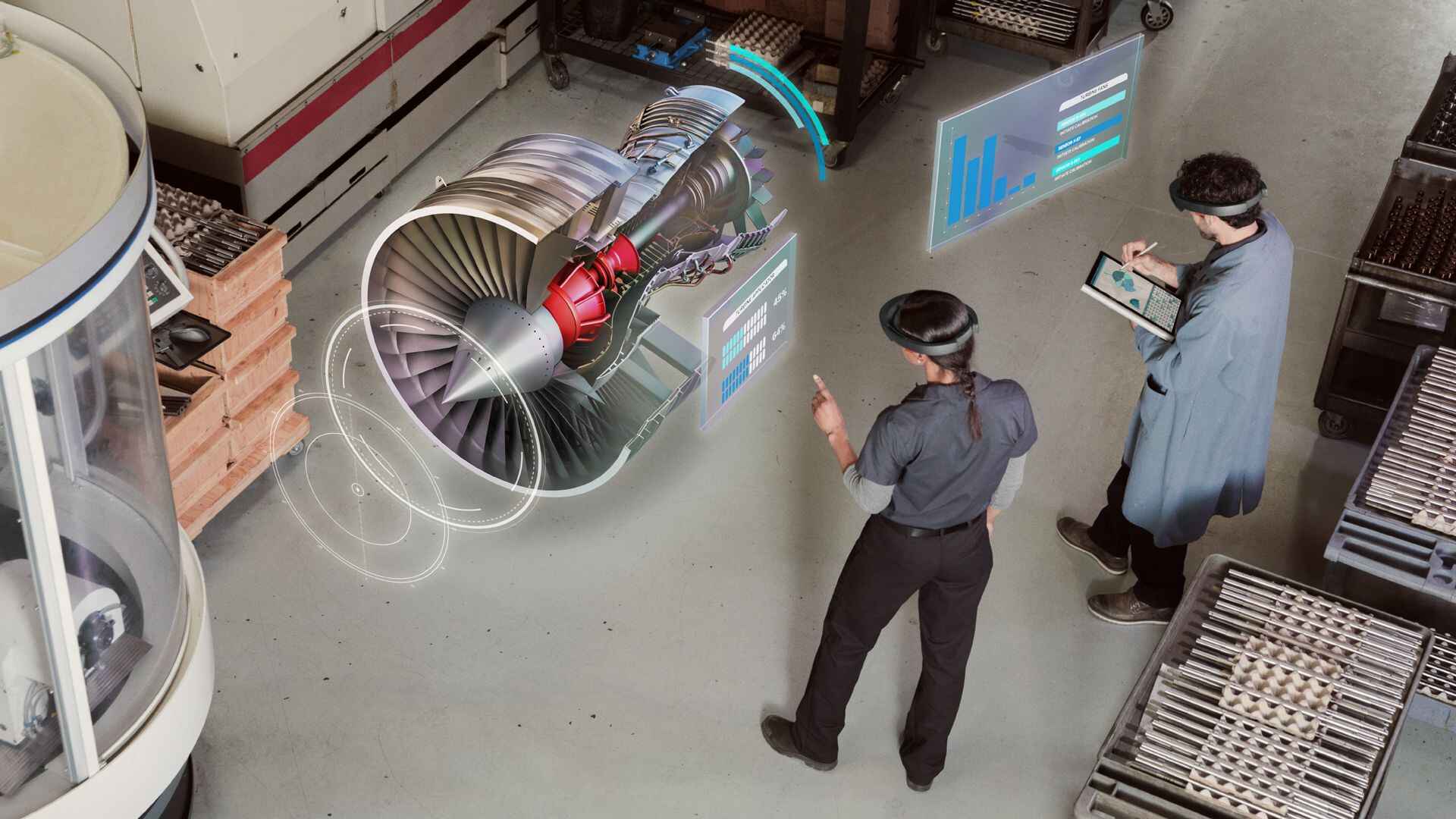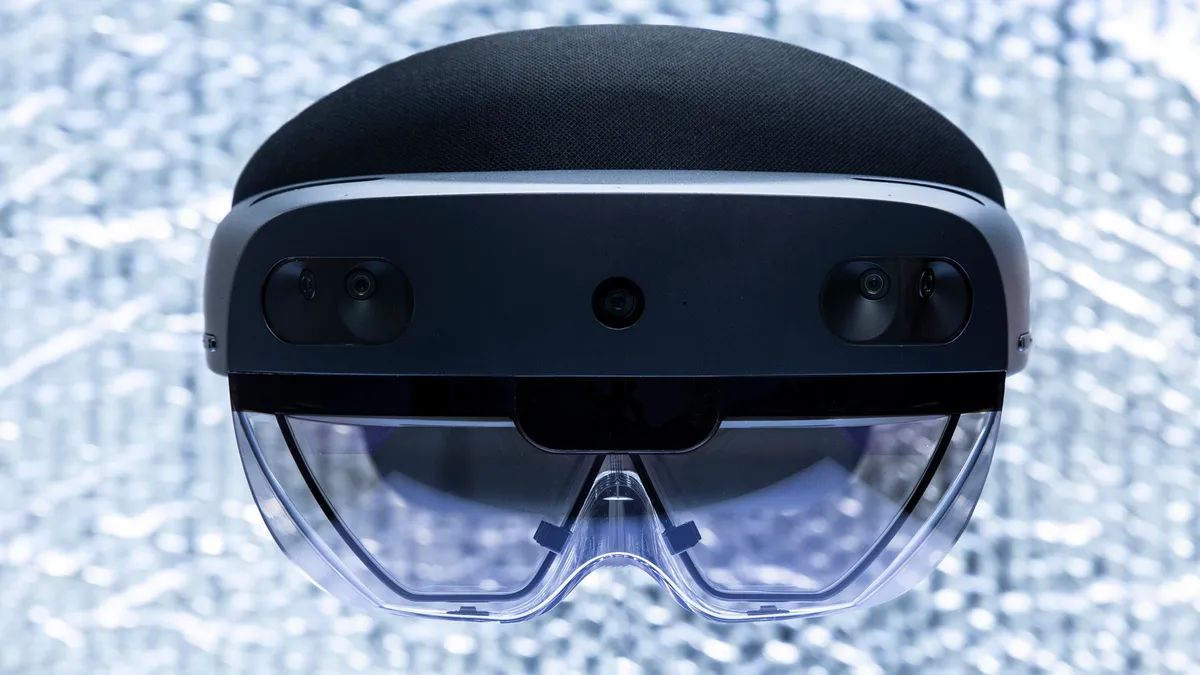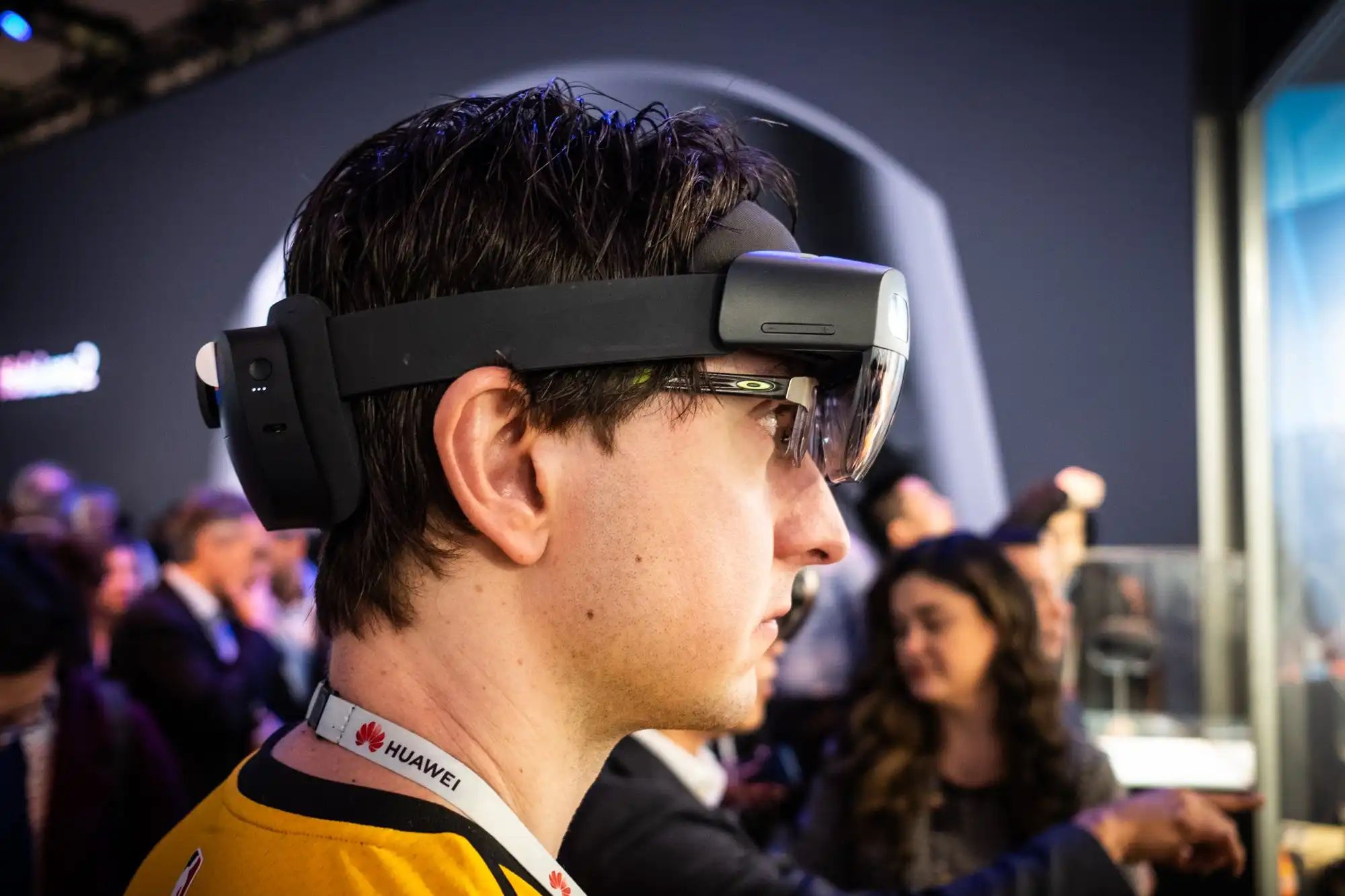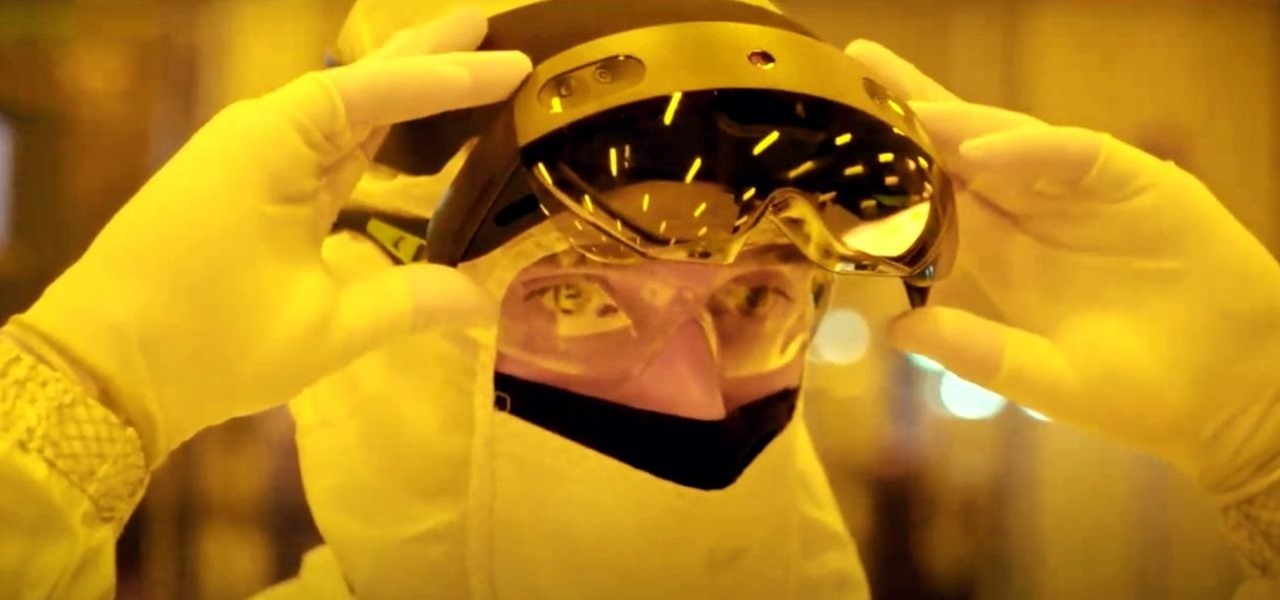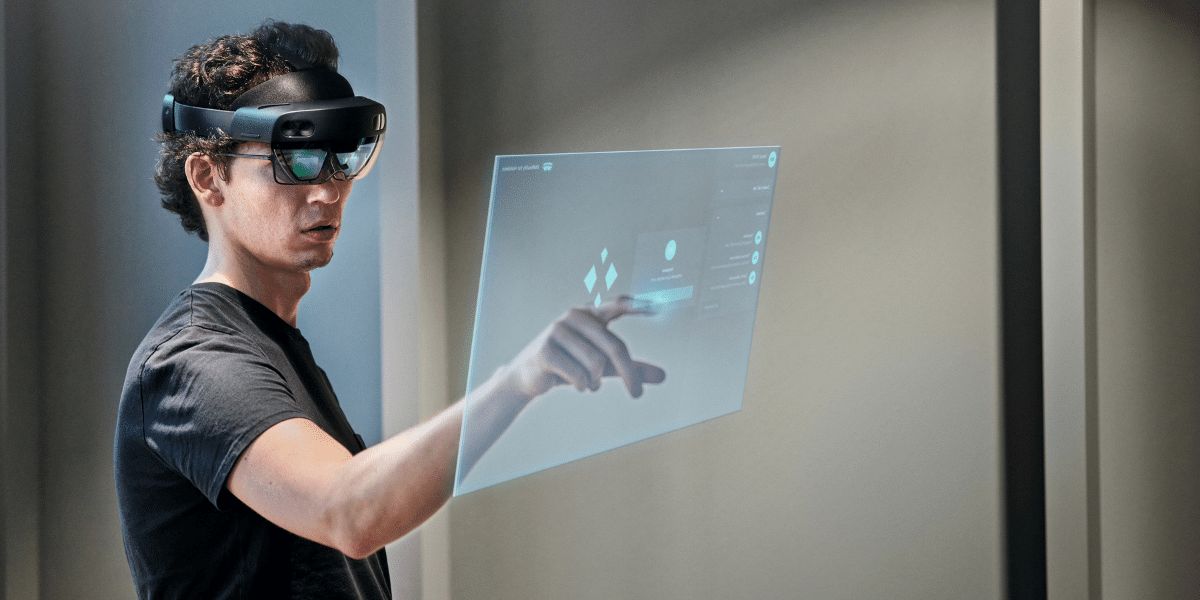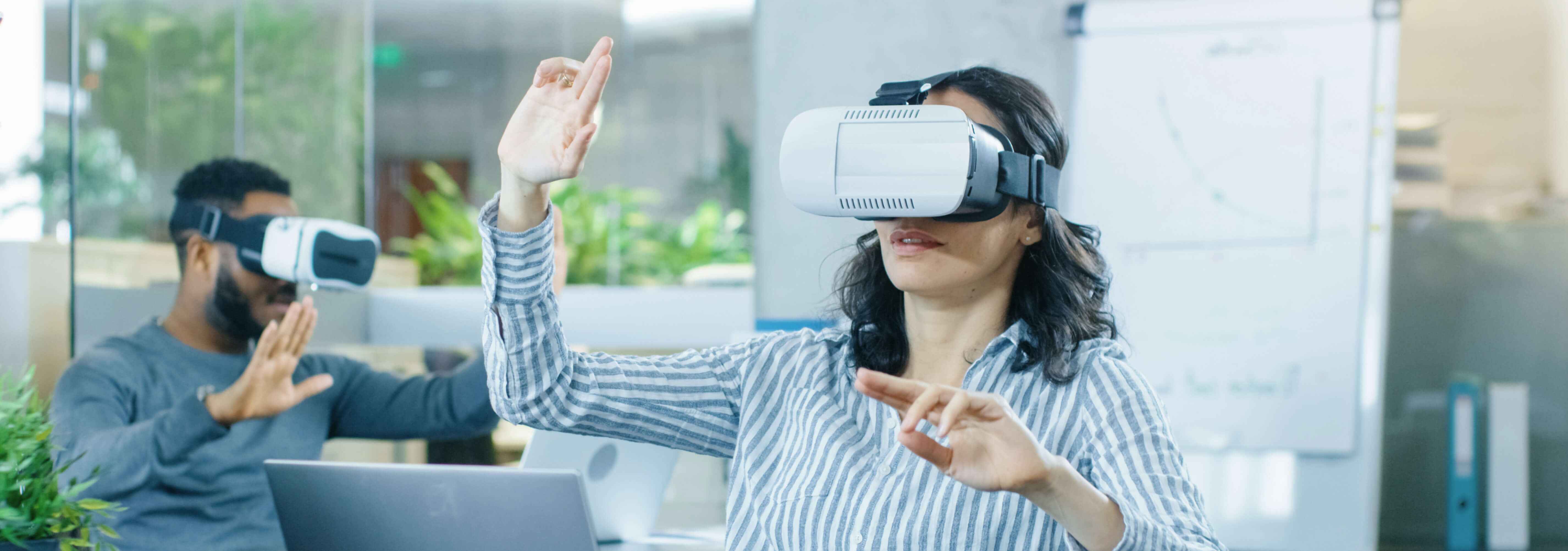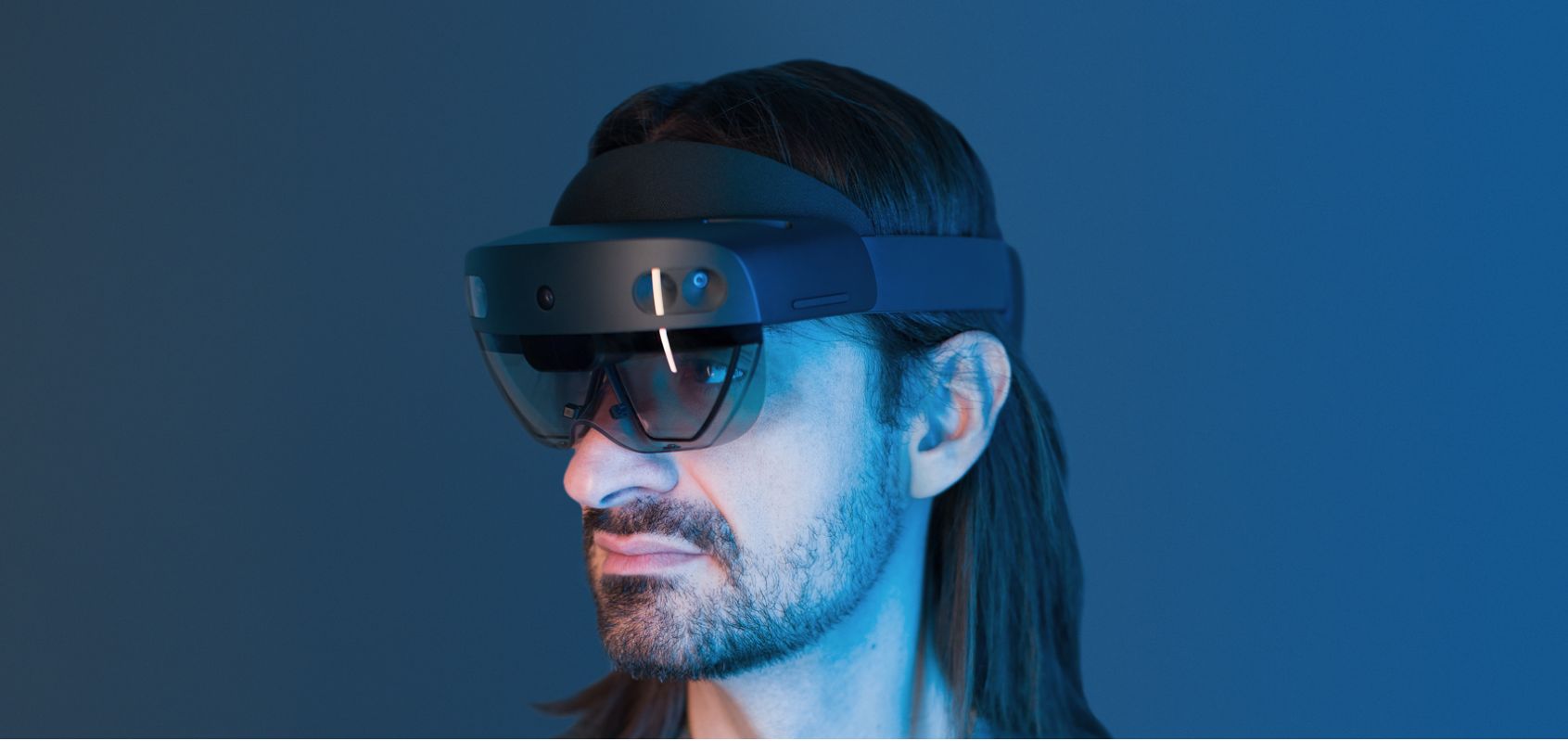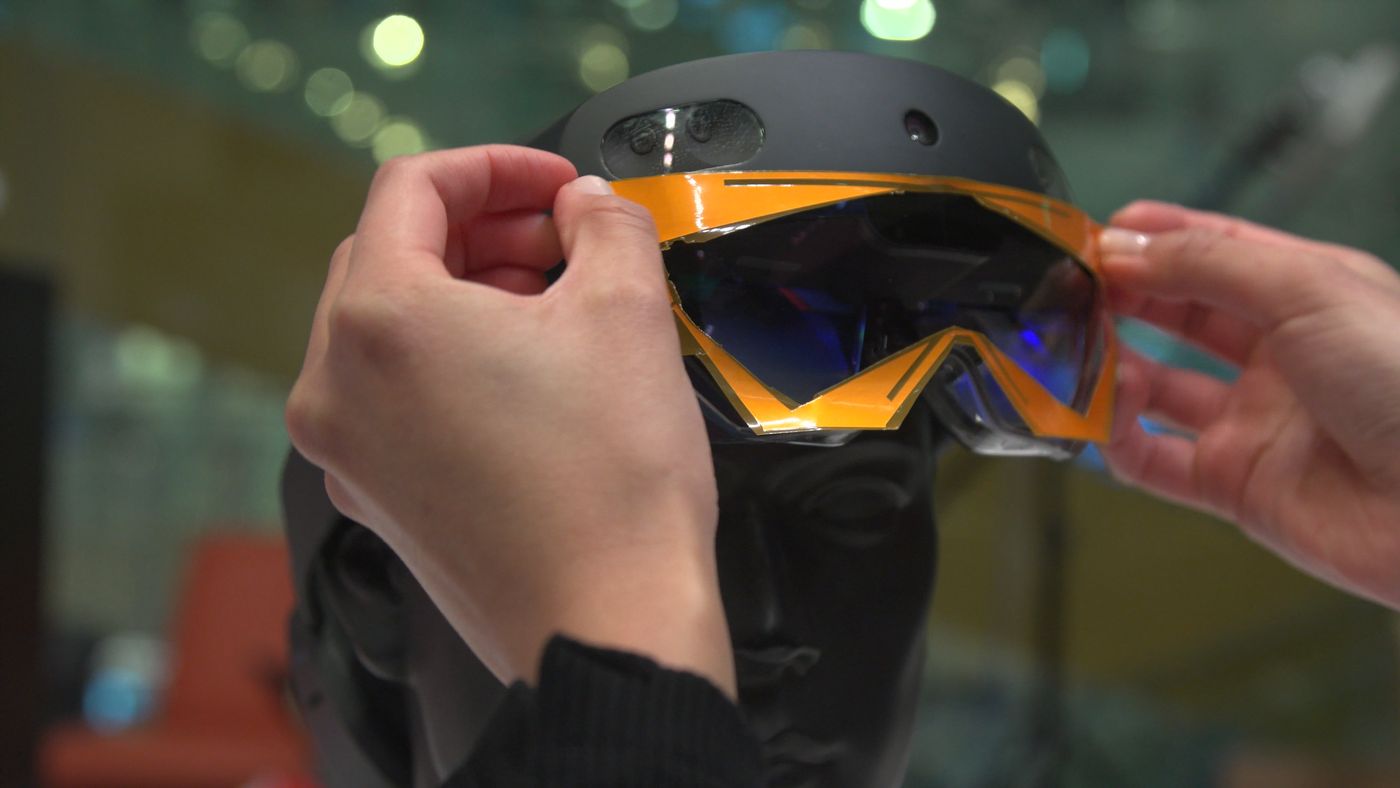Introduction
Welcome to the exciting world of HoloLens design! As a designer, you have the opportunity to create immersive experiences that seamlessly blend the physical and virtual realms. HoloLens, developed by Microsoft, is an augmented reality headset that overlays holograms onto the real world, allowing users to interact with digital content in a completely new way.
In this article, we will explore the fundamentals of designing for HoloLens, delving into the key aspects that will enable you to craft captivating and intuitive experiences. We will discuss the importance of understanding HoloLens capabilities, creating holograms, utilizing gestures and voice commands, designing user interfaces, optimizing performance, and testing and debugging your apps. By the end, you will have a solid foundation to start designing for HoloLens like a pro.
Before we begin, it’s worth noting that designing for HoloLens requires a multidisciplinary approach. It combines elements of user experience (UX) design, graphic design, interaction design, and 3D modeling. So, whether you are an experienced designer looking to adapt your skills to the world of augmented reality or a beginner eager to dive into the realm of HoloLens, this article is the perfect starting point for your journey.
Designing for HoloLens offers endless possibilities to create truly immersive experiences. Whether you are building educational applications, entertainment experiences, or business productivity tools, the principles and techniques covered in this article will help you maximize the potential of HoloLens and captivate your users.
So, let’s dive deep into the world of HoloLens design and unleash your creativity to deliver extraordinary experiences that surpass the boundaries of reality.
Understanding HoloLens
Before diving into the design process, it is crucial to have a solid understanding of HoloLens and its capabilities. HoloLens is an untethered, head-mounted device that combines a high-definition display, depth sensors, spatial sound, and advanced tracking to create holographic experiences in the real world. It runs on Windows Mixed Reality platform, enabling developers to build immersive apps and games.
One of the key features of HoloLens is its ability to map and understand the physical environment. Through the use of sensors and cameras, HoloLens can scan and interpret the space around the user, allowing holograms to interact with real-world objects and surfaces seamlessly. This spatial mapping capability opens up possibilities for designing experiences that blend digital content with the user’s surroundings.
In addition to spatial mapping, HoloLens also provides users with a wide field of view (FOV) for viewing holograms. Unlike other virtual reality (VR) headsets that restrict the field of vision, HoloLens allows users to see and interact with holograms within their natural field of view. This ability to maintain a connection with the real world while engaging in augmented reality experiences is a unique aspect of HoloLens design.
Another crucial aspect of HoloLens is its interaction methods. HoloLens utilizes gesture recognition and voice commands to enable users to interact with holograms and navigate through applications. Users can use their hands to pinch, tap, and swipe in the air to control the holographic content. They can also use their voice to issue commands and control the app’s functionalities. Understanding these interaction methods is vital in designing intuitive and user-friendly experiences for HoloLens.
Furthermore, HoloLens features a built-in spatial sound system that assists in creating a more immersive experience. Spatial sound enables users to perceive sounds coming from different directions and distances, providing a realistic audio experience that complements the visual aspects of holograms. Designers can leverage spatial sound to enhance the overall immersive experience and guide users’ attention within the holographic environment.
Overall, understanding the capabilities and characteristics of HoloLens is essential for designing effective and engaging experiences. By harnessing the spatial mapping, wide FOV, gesture and voice interaction, and spatial sound, as well as being mindful of the device’s limitations, designers can create truly immersive and user-centric augmented reality applications for HoloLens.
Designing for Immersion
Creating immersive experiences is at the heart of HoloLens design. The goal is to transport users into a holographic world that feels seamless and interactive. To achieve this level of immersion, designers must consider various factors that contribute to the overall experience.
The first aspect to consider is the visual design of holograms. HoloLens allows designers to create holograms with a realistic, three-dimensional appearance. This means paying attention to details such as lighting, shading, and texture to ensure that holograms seamlessly blend with the real-world environment. It is also important to optimize holograms for different lighting conditions, as the appearance of digital content may change based on the surroundings.
In addition to visual design, sound plays a crucial role in enhancing immersion. Spatial sound, provided by HoloLens, allows designers to create realistic audio experiences where sounds seem to come from specific locations in the holographic space. By utilizing spatial sound, designers can enhance the sense of presence and engagement for users, making the experience more immersive and believable.
Another key factor in designing for immersion is the use of animations and transitions. Smooth and natural animations help create a sense of continuity and fluidity in the holographic experience. Designers should pay attention to the timing and easing of animations to ensure they feel natural and responsive to user interactions. Furthermore, thoughtful use of transitions between different holographic scenes or interactions can make the experience feel more cohesive and engaging.
Interaction design is also vital in designing immersive experiences for HoloLens. Users should feel empowered and in control as they interact with holograms. Gestures and voice commands should be intuitive and responsive, allowing users to manipulate and navigate through the holographic environment effortlessly. Providing clear visual feedback and audio cues during interactions can further enhance the sense of immersion and make the experience more enjoyable.
Lastly, the overall user experience should be smooth and seamless. Designers should aim for uninterrupted experiences by minimizing load times, optimizing performance, and avoiding distractions. Users should be able to effortlessly move between different holographic elements or scenes without any jarring interruptions, maintaining a sense of flow and continuity throughout the experience.
By considering these factors and using the available design tools and guidelines provided by Microsoft, designers can create immersive experiences that captivate users and transport them into a world of mixed reality. The key is to pay attention to visual design, sound, animations, interactions, and the overall flow of the experience, ensuring that every element works together harmoniously to create a truly immersive and unforgettable journey.
Creating Holograms
One of the most exciting aspects of designing for HoloLens is the ability to create and place holograms in the real world. Holograms are the digital content that users interact with while wearing the HoloLens headset. To create compelling holographic experiences, designers need to understand the process of creating and optimizing holograms.
The first step in creating holograms is to model them in 3D. Designers can use various 3D modeling software or tools to create intricate and detailed holographic objects. The key is to ensure that the models are optimized for real-time rendering on HoloLens. This involves reducing the polygon count, simplifying textures, and optimizing the overall size of the 3D models to ensure smooth performance.
Once the 3D models are created, designers can add interactivity and functionality to the holograms. This can include adding animations, defining how the holograms react to user gestures and voice commands, and incorporating dynamic behaviors. Designers can also attach collider components to the holograms, allowing them to interact with real-world objects and respond to collisions or physics simulations.
Another important aspect of creating holograms is understanding the concept of spatial mapping. HoloLens scans and maps the physical environment, creating a mesh of the surrounding space. Designers can leverage this spatial mapping data to place holograms in the real world with precision. By aligning holograms with the environment, designers can create augmented reality experiences that blend seamlessly with the physical surroundings.
When designing holograms, it is essential to consider the scale and depth of the virtual objects. HoloLens provides an understanding of depth perception, allowing users to perceive holograms as if they exist in the physical space. Designers should avoid creating holograms that are too small or too large in relation to the user’s surroundings. Proper scaling and depth perception help create a more realistic and immersive experience.
In addition to 3D modeling and placement, designers should also think about the persistence of holograms. HoloLens allows users to place and anchor holograms in a specific location, so they stay in place even when the user moves around. This persistence ensures that the holograms remain fixed in the user’s environment, providing a consistent and continuous experience.
Lastly, it is crucial to consider the performance and optimization of holograms. HoloLens has hardware limitations, and designers need to ensure that their holograms run smoothly and efficiently. This involves managing the polygon count, texture resolution, and animation complexity to provide a seamless and responsive experience for users.
By understanding the process of creating holograms and considering factors such as 3D modeling, interactivity, spatial mapping, scaling, persistence, and optimization, designers can create captivating and immersive holographic experiences for HoloLens users. The ability to bring digital content into the real world opens up endless possibilities for creating innovative and engaging interactions.
Using Gestures and Voice Commands
Gestures and voice commands play a vital role in interacting with holograms and navigating through applications on HoloLens. Understanding the available gestures and voice commands and designing intuitive interactions is crucial for creating a seamless and user-friendly experience.
Let’s start with gestures. HoloLens recognizes a variety of hand gestures that allow users to manipulate holograms and interact with digital content. These gestures include air tap, bloom, pinch, and swipe. The air tap gesture, performed by extending the index finger and pressing down, is used to select, activate, or click on holograms. The bloom gesture, done by opening the hand fully, serves as a universal back or home command. Pinch and swipe gestures enable users to scale, rotate, and manipulate holograms in three dimensions.
Designers should ensure that the required gestures are intuitive and align with users’ expectations. Providing visual cues or hints can help users understand the available gestures and their purpose. Additionally, designers should consider the ergonomics of these gestures, making them comfortable and easy to perform for extended periods, as users may wear the HoloLens headset for extended durations.
Alongside gestures, voice commands offer another powerful way to interact with HoloLens. Users can issue voice commands to perform various actions, such as launching applications, navigating menus, or triggering specific functionalities. Designers should provide clear instructions and feedback on available voice commands to help users discover and understand the available options.
When designing for voice commands, it is important to consider variations and accents in speech. Designers should aim for a wide range of users to be able to effectively use voice commands, even if they have different speech patterns or accents. Testing and validating voice commands with users from diverse backgrounds can help ensure their effectiveness and usability.
Designers should also consider the context and environment in which voice commands are used. Background noise or crowded spaces may affect the accuracy of voice recognition. Providing visual or audio feedback to acknowledge successful recognition can help users feel confident in their interactions and reduce frustration when commands are misinterpreted.
Ultimately, the key to designing effective gesture and voice interactions is to create a natural and intuitive experience. Users should feel empowered and in control as they interact with holograms, and the interactions should seamlessly blend with their real-world movements and speech. By considering ergonomics, user expectations, variations in speech, and providing clear feedback, designers can create intuitive and delightful interactions for HoloLens users.
Designing User Interfaces for HoloLens
User interface (UI) design is a crucial aspect of creating intuitive and immersive experiences for HoloLens. Since HoloLens overlays holograms onto the real world, designing user interfaces that seamlessly integrate with the physical environment is essential.
When designing UI for HoloLens, it is important to strike a balance between providing necessary information and minimizing distractions. Since users can still see the real world while wearing the headset, designers should avoid cluttering the field of view with excessive UI elements. Instead, focus on designing UI that enhances and enriches the holographic content, providing contextually relevant information and controls.
One approach to designing UI for HoloLens is to use spatial anchoring. Spatial anchoring allows UI elements to stay fixed in the user’s environment, so they appear in the same location regardless of the user’s movements. This provides continuity and makes it easier for users to locate and interact with the UI elements. Designers should carefully consider the placement and size of UI elements, ensuring they are visible and legible without obstructing the user’s view of the holograms.
Another important consideration is the use of 3D UI elements that align with the holograms and respond to user interactions. Rather than relying solely on traditional 2D menus or buttons, designers can create holographic UI elements that appear to exist in the same space as the holograms. These elements can be manipulated and interacted with using gestures and voice commands, providing a more immersive and intuitive interface.
Designers should also prioritize clarity and readability in UI design. Considering the limited screen space and potential distractions, UI elements should be clear, concise, and easy to read. Using legible fonts, appropriate color contrast, and visual cues can help users quickly and accurately understand the purpose and functionality of the UI elements.
Furthermore, designers should design for accessibility, considering users with different abilities and preferences. Providing options for customization, such as font sizes or color schemes, can make the UI more inclusive and adaptable to individual needs.
Interaction feedback is another crucial aspect of UI design for HoloLens. Providing visual and audio feedback when users interact with UI elements helps them understand the status and response of their actions. Smooth transitions, animation, and audio cues can enhance the user’s sense of engagement and guide them through the interaction process.
Lastly, designers should test and iterate on their UI designs by engaging with users to gather feedback and insights. Observing how users interact with the UI and gathering their impressions and suggestions can provide valuable input for improving the overall user experience.
By considering the placement, size, 3D elements, clarity, accessibility, interaction feedback, and user feedback, designers can create intuitive and immersive user interfaces for HoloLens. A well-designed UI enhances the overall experience and enables users to seamlessly engage with holographic content, unlocking the full potential of augmented reality.
Optimizing Performance for HoloLens
Optimizing performance is crucial when designing for HoloLens, as it directly impacts the overall user experience. Ensuring smooth and responsive performance allows users to fully immerse themselves in the holographic world without interruptions or lag. Here are some key considerations for optimizing performance on HoloLens.
Firstly, optimizing the holographic content itself is important. Designers should aim to create efficient and lightweight 3D models and textures. By reducing the polygon count, simplifying textures, and optimizing the overall size of the assets, designers can enhance performance while maintaining visual quality. It is crucial to strike a balance between visual fidelity and performance to ensure a seamless user experience.
Additionally, it is recommended to utilize occlusion to improve performance. Occlusion involves hiding the holographic content that is not visible to the user’s line of sight. By selectively rendering only the holograms that are visible and occluding those behind objects or surfaces, performance can be improved significantly. Designers can achieve occlusion by utilizing spatial mapping data or incorporating depth masking techniques.
Considerations should also be given to rendering techniques. Leveraging modern graphics techniques, such as level-of-detail (LOD) and dynamic batching, can help optimize rendering performance on HoloLens. LOD reduces the level of detail of objects as they move farther away from the user, and dynamic batching combines similar objects to reduce the number of draw calls, improving performance.
Properly managing the system resources is key to maintaining optimal performance. Designers should be mindful of memory usage and minimize any unnecessary memory allocations that could potentially impact performance. Caching frequently used data and reusing objects whenever possible can help reduce memory overhead and maximize performance.
It is also important to consider the impact of lighting and shading on performance. Real-time global illumination techniques, such as precomputing light maps or using baked lighting, can help maintain high-fidelity lighting while minimizing the performance cost. Carefully balancing the number and complexity of light sources is crucial to optimize the rendering process.
Lastly, it is recommended to conduct performance testing and profiling throughout the development process. Identifying and addressing performance bottlenecks early on can lead to significant improvements in the final application. Testing on real HoloLens devices and gathering performance data can provide valuable insights into areas for optimization.
By considering optimization techniques such as efficient asset creation, occlusion, rendering techniques, resource management, lighting optimization, and conducting performance testing, designers can ensure a smooth and responsive experience on HoloLens. Optimizing performance not only enhances user satisfaction but also opens up opportunities for more complex and visually stunning holographic experiences.
Testing and Debugging for HoloLens
Thorough testing and effective debugging are essential stages of the development process for HoloLens applications. Testing allows designers to ensure that the app functions as intended, while debugging helps identify and resolve any issues or errors that may arise. Here are some key considerations for testing and debugging on HoloLens.
One important aspect of testing is to ensure compatibility across different HoloLens devices. Since HoloLens models may have varying processing power and capabilities, it is crucial to test the app on different devices to ensure it performs consistently. This helps optimize performance and ensure a seamless user experience across a range of devices.
Designers should also pay attention to usability testing. Observing how users interact and navigate within the holographic environment can provide valuable insights into areas for improvement. Testing with users from diverse backgrounds and levels of familiarity with HoloLens can help uncover any usability challenges or potential confusion.
Additionally, testing should include evaluating the app’s performance in various scenarios. Test the app in different lighting conditions, environments, and user movements to ensure that it remains stable and performs well. This ensures that issues, such as hologram misalignment or tracking errors, are addressed and the app remains reliable in different usage contexts.
When it comes to debugging, understanding the debugging tools available for HoloLens is crucial. Unity, the popular game development engine for HoloLens, provides tools for debugging and inspecting the app during runtime. These tools allow designers to analyze scenes, check for performance bottlenecks, and track any errors that may occur. Familiarity with these debugging tools is essential for efficient troubleshooting and problem-solving.
Remote debugging is another valuable technique for testing and debugging HoloLens applications. Debugging remotely allows designers to connect to a HoloLens device from their development environment, enabling real-time inspection and debugging of the app. This can greatly speed up the debugging process and help identify and address issues more effectively.
Monitoring performance metrics is also essential while testing and debugging. Keeping an eye on resource usage, frame rate, and memory consumption can help pinpoint any performance-related issues and optimize the app accordingly. Analyzing performance metrics throughout development ensures a smooth and responsive experience for users.
Finally, gathering feedback from users and beta testers is crucial for iterating and improving the app. Collecting feedback on usability, performance, and any bugs encountered allows designers to make necessary adjustments and enhancements. Regular updates and bug fixes are essential to ensure the app remains stable, reliable, and optimized for HoloLens users.
By investing time and effort into thorough testing and effective debugging processes, designers can ensure a high-quality and reliable HoloLens application. The combination of testing on different devices, usability testing, performance testing, leveraging debugging tools, remote debugging, and gathering feedback helps create a polished and enjoyable mixed reality experience on HoloLens.
Conclusion
Designing for HoloLens offers endless possibilities to create immersive and captivating experiences that merge the digital and physical worlds. By understanding the capabilities of HoloLens, designers can leverage spatial mapping, wide FOV, gesture recognition, voice commands, and spatial sound to create truly transformative augmented reality applications.
Throughout the design process, various considerations come into play. Designers must prioritize immersion, ensuring that the visual design, sound, animation, and interactions work together to create a seamless and engaging experience. The placement and design of holograms should align with the physical environment and respond to user gestures and voice commands.
User interface design plays a pivotal role in HoloLens applications, with spatial anchoring and 3D elements helping to integrate the interface with the holographic content. Optimizing performance is crucial to ensure responsive and smooth experiences, through techniques like efficient asset creation, occlusion, rendering optimization, and resource management.
Testing and debugging are essential to validate the functionality, performance, and usability of HoloLens applications. Compatibility across different devices, usability testing with diverse users, and thorough performance testing provide valuable insights for improvement. Leveraging debugging tools and remote debugging helps identify and resolve issues effectively. Regular updates and feedback from users aid in continuous improvement and refinement.
Designing for HoloLens is an exciting and evolving field. As technology advances, new possibilities for creating immersive and impactful experiences will continue to emerge. By embracing the principles and techniques discussed in this article, designers can unlock the full potential of HoloLens and deliver unforgettable augmented reality journeys.







